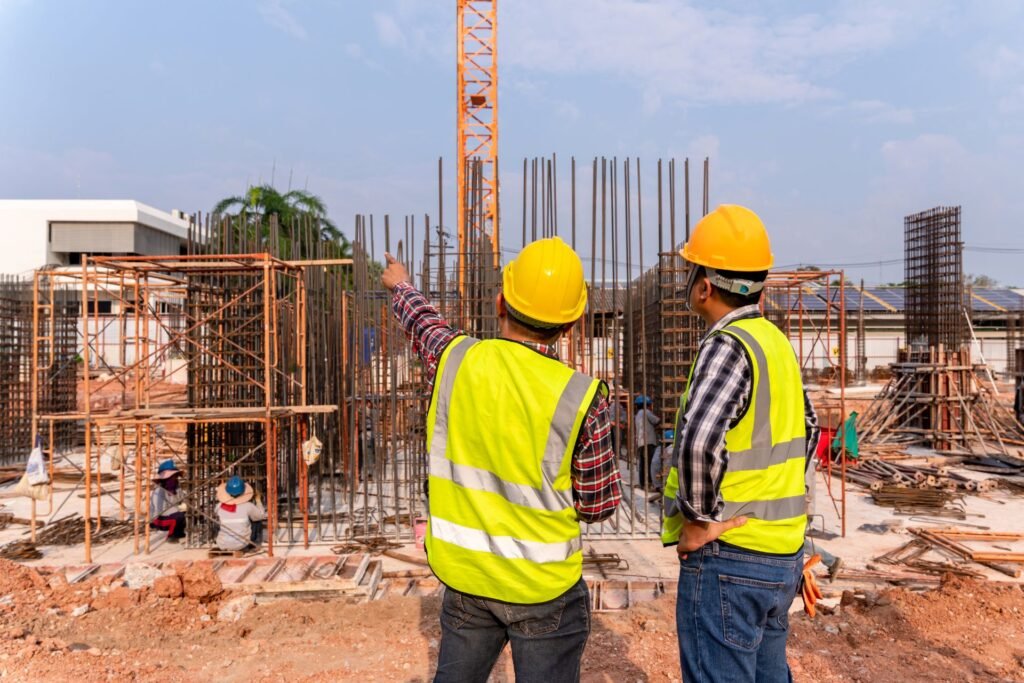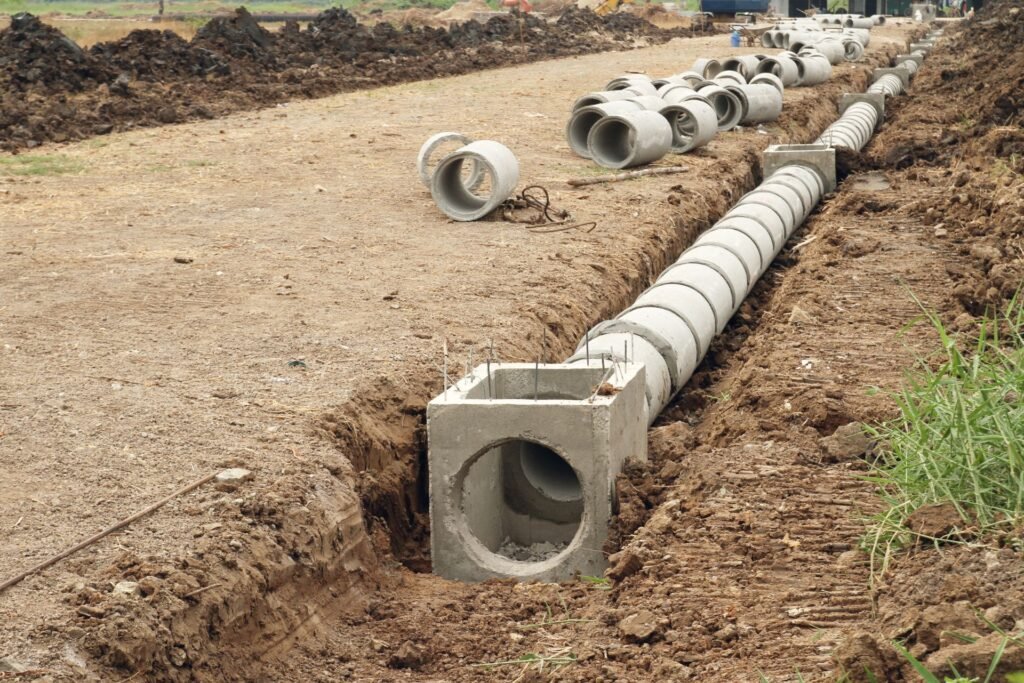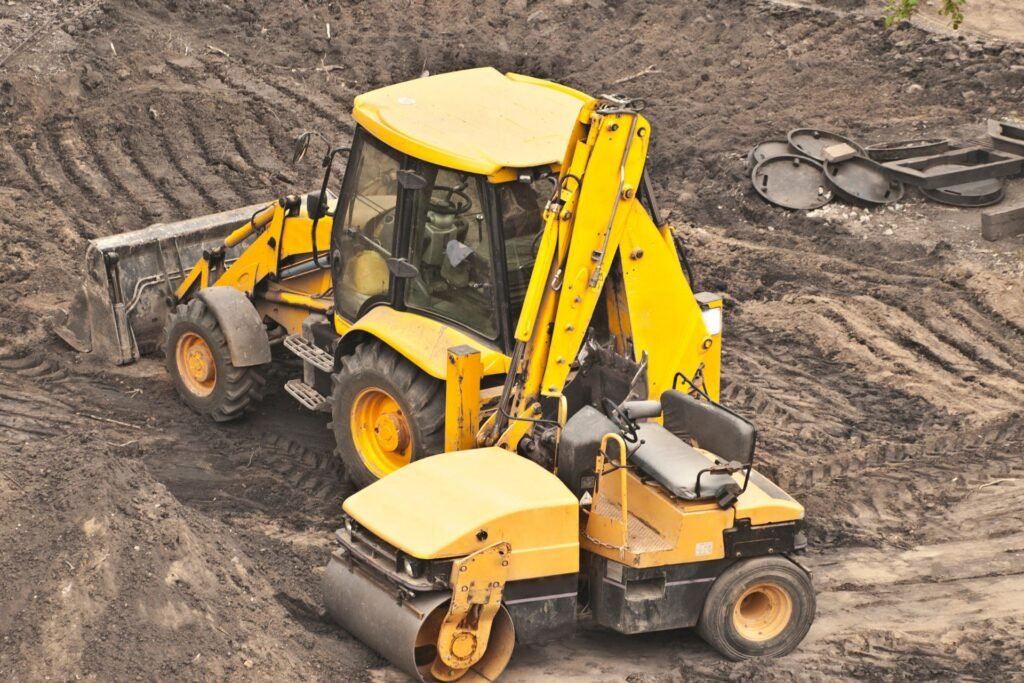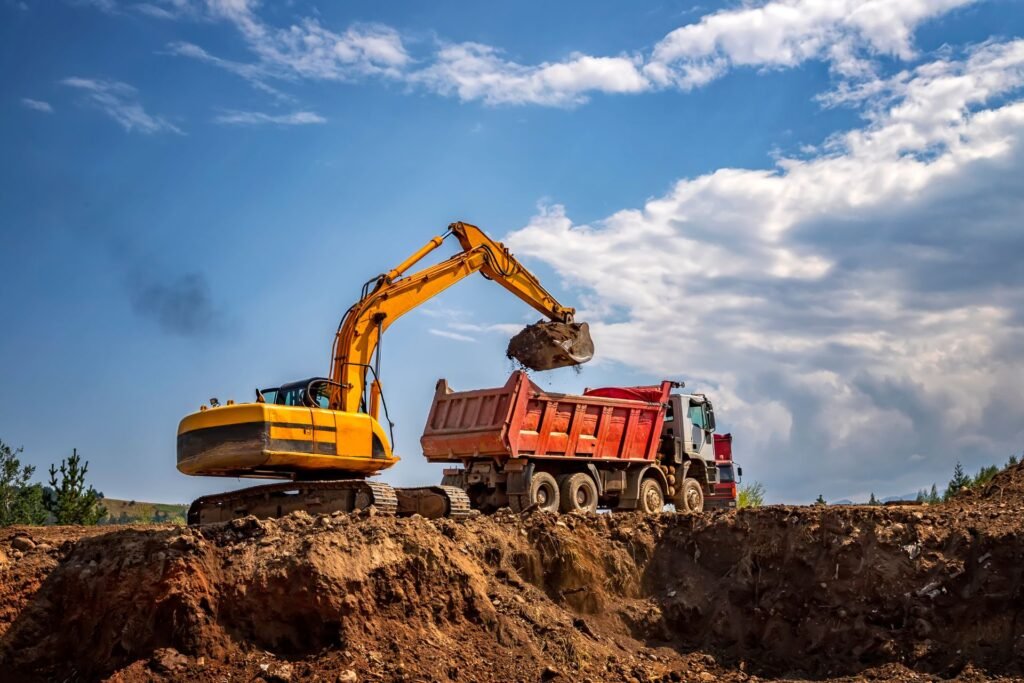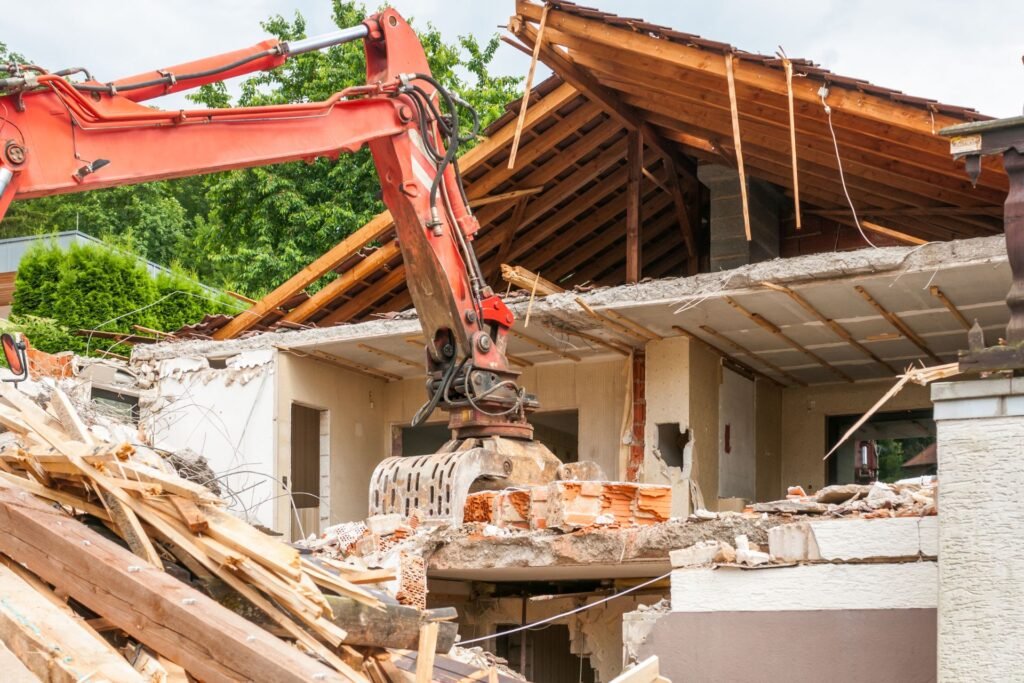Welcome to an in-depth exploration of the true cost of civil construction in New Zealand. Whether you’re curious about how much it takes to build the roads you drive on, the bridges you cross, or the infrastructure that supports your daily life, understanding the financial aspects behind these massive projects is essential. Civil construction is the backbone of our communities, shaping the spaces we live and work in. In this article, we’ll break down the various factors that influence the costs of these projects, giving you a clearer picture of where the money goes and why it’s crucial to consider every detail when planning such undertakings. Whether you’re a homeowner, business owner, or simply interested in how public funds are spent, this guide will offer valuable insights into the complexities and challenges of civil construction in NZ.
On average, the cost of civil construction in New Zealand ranges from NZD 2 million for smaller projects, such as minor road improvements, to over NZD 100 million for large-scale infrastructure projects like motorways or bridges. The exact cost depends on various factors, including project size, location, material and labor costs, and regulatory requirements. Accurate budgeting is crucial to account for these variables and ensure successful project completion.
Table of Contents
What Is Civil Construction
Civil construction is a vital aspect of the infrastructure that shapes the environment we live in, supporting both the functionality and aesthetics of our communities.
Definition
Civil construction refers to the process of designing, building, and maintaining the infrastructure that serves the public. This includes essential structures and systems like roads, bridges, water and sewage systems, and public transportation networks. Unlike residential or commercial construction, which focuses on buildings, civil construction is dedicated to creating the backbone of our daily lives by ensuring we have safe, efficient, and reliable public infrastructure.
Examples
In New Zealand, civil construction plays a significant role in developing and maintaining the country’s infrastructure. Common examples include the construction and improvement of motorways, which facilitate smooth transportation across regions; the creation and upkeep of public parks, which provide recreational spaces for communities; and the development of utilities such as water treatment plants and power grids, which are essential for public health and safety. Major projects like the Auckland City Rail Link and the ongoing upgrades to State Highway 1 illustrate the scale and impact of civil construction in New Zealand.
Importance
The importance of civil construction cannot be overstated, as it is fundamental to the country’s growth and day-to-day operations. Effective civil construction ensures that cities and towns function smoothly, supporting economic activities, enhancing public safety, and improving the overall quality of life. By developing and maintaining infrastructure, civil construction helps to drive economic growth, enable efficient transportation, and ensure access to vital resources like clean water and electricity. In essence, it is the foundation upon which modern society is built, making it indispensable to the progress and prosperity of New Zealand.

Key Factors Influencing The Cost Of Civil Construction In NZ
Understanding the factors that influence the cost of civil construction in New Zealand is crucial for stakeholders, including developers, contractors, and investors. These factors not only determine the budget but also impact the overall feasibility and success of a project. Below, we delve into the key elements that significantly affect the cost structure of civil construction projects across New Zealand.
Project Size and Scope
One of the most significant determinants of construction costs is the size and scope of the project. The scale of a project—whether it’s a small community park or a large-scale motorway—has a profound impact on the overall budget. Smaller projects generally require fewer resources, materials, and labor, leading to lower costs. In contrast, large-scale projects involve more complex logistics, extensive material use, and higher labor demands, all of which contribute to increased expenses. Moreover, larger projects often require more sophisticated technology and equipment, further driving up the costs.
For instance, a small park might involve basic landscaping, benches, and pathways, whereas a motorway construction could require massive earthworks, complex drainage systems, multiple layers of pavement, and extensive safety features. The difference in scope between these projects results in a significant disparity in costs.
Location
The geographical location of a construction project within New Zealand plays a crucial role in determining costs. Urban areas, such as Auckland or Wellington, generally have higher construction costs compared to rural areas. This discrepancy is due to several factors, including logistical challenges, accessibility, and local regulations.
In urban settings, the high cost of land, the complexity of navigating existing infrastructure, and stricter building codes can all contribute to increased expenses. Additionally, the logistics of transporting materials and equipment to city centers, where traffic congestion and limited space are common, can further escalate costs.
Conversely, while rural areas might offer cheaper land, the cost savings can be offset by the challenges of remote access. Transportation of materials to less accessible regions, potential scarcity of local labor, and the need to adhere to regional regulations can all influence the final project cost.
Material Costs
Material costs are a significant component of any construction project, and in New Zealand, they are influenced by both global and local market conditions. Common materials in civil construction include concrete, steel, and asphalt. The prices of these materials can fluctuate based on a variety of factors, such as international demand, supply chain disruptions, and currency exchange rates.
For example, the global steel market can experience volatility due to changes in international trade policies or supply shortages from major producing countries. Similarly, the cost of concrete may vary depending on the availability of raw materials like sand and cement, which are influenced by environmental regulations and mining operations. Asphalt prices can be particularly sensitive to fluctuations in the oil market, as it is a petroleum-based product.
In New Zealand, local factors such as the cost of importing materials, domestic production capabilities, and transportation logistics also play a role in determining material costs. Construction projects in remote areas may face higher material costs due to the added expense of transportation.
Labor Costs
Labor is another critical factor in the cost of civil construction, and in New Zealand, the demand for skilled labor is high. The cost of labor in New Zealand is generally higher than in many other regions due to the country’s strong labor laws, minimum wage regulations, and the need for specialized skills in construction.
Skilled labor, such as engineers, project managers, and tradespeople, commands premium wages, reflecting their expertise and the complexities of modern construction projects. Additionally, New Zealand has experienced trends such as labor shortages, particularly in the wake of global events like the COVID-19 pandemic. These shortages can drive up wages further as companies compete to attract and retain qualified workers.
On the flip side, any surplus in labor supply could potentially stabilize or reduce labor costs, but this scenario is less common in the current New Zealand construction landscape, where skilled labor remains in high demand.
Compliance and Regulations
Compliance with local government regulations, building codes, and environmental standards is a non-negotiable aspect of civil construction in New Zealand. These regulations ensure that projects are safe, sustainable, and meet the community’s needs. However, they also add to the overall cost of construction.
Regulatory requirements may include obtaining permits, adhering to specific building codes, and ensuring that construction practices do not harm the environment. For instance, projects near protected natural areas may need to invest in special measures to minimize environmental impact, such as erosion control or habitat restoration. Similarly, stringent safety standards may require additional inspections and certifications, adding both time and cost to the project.
These compliance costs are necessary to ensure the quality and safety of the construction, but they can also extend project timelines and require additional financial resources.
Project Duration and Timeline
The duration and timeline of a project have a direct impact on its overall cost. Longer projects typically incur higher costs due to prolonged use of resources, extended labor hours, and ongoing project management expenses. Additionally, longer timelines increase the likelihood of encountering delays, which can further escalate costs.
Weather conditions in New Zealand, for example, can be unpredictable and may cause delays, particularly in outdoor construction projects. Extended timelines also mean that contractors and subcontractors need to be retained for longer periods, leading to increased labor costs. Moreover, longer projects may face fluctuating material costs, as prices can change over time due to market conditions.
Effective project management is crucial to keeping timelines on track and minimizing cost overruns. Delays not only inflate the budget but can also affect the overall feasibility of a project, especially if it extends beyond the planned duration.
In conclusion, the cost of civil construction in New Zealand is influenced by a myriad of factors, from the size and scope of the project to the location, material, and labor costs, as well as compliance with regulations and the project duration. Each of these elements plays a critical role in shaping the final budget and must be carefully considered during the planning and execution phases. Understanding these factors allows stakeholders to better manage costs, anticipate challenges, and deliver successful construction projects.

A Closer Look: Breakdown Of Costs In A Typical Civil Construction Project
When planning a civil construction project, understanding the various costs involved is crucial to ensuring that the project remains on budget and is completed efficiently. Here, we’ll break down the costs into distinct phases to give you a clearer picture of where your money goes, from the initial planning stages to post-construction maintenance.
1. Planning and Design
The first significant financial commitment in any civil construction project is the planning and design phase. This stage involves several key activities that set the foundation for the entire project:
- Architectural Design: Engaging with architects to create detailed plans and blueprints tailored to the project’s needs. This includes working on the layout, structure, and aesthetics of the construction, which are crucial to achieving the desired outcome.
- Environmental Impact Assessments: Before construction begins, it is essential to conduct studies that assess the potential environmental impacts of the project. These assessments help in identifying any significant ecological risks, ensuring that the project complies with environmental regulations, and may require adjustments to the design.
- Feasibility Studies: These studies evaluate the practicality of the project by analyzing various factors such as site location, available resources, and financial viability. Feasibility studies are vital for determining whether the project is worth pursuing and help in making informed decisions early on.
Cost Breakdown: The costs in this phase can vary significantly depending on the project’s complexity, the location, and the level of detail required in the design and assessments. Generally, this phase accounts for 10-15% of the total project budget.
2. Site Preparation
Once the planning and design are completed, the next step involves preparing the site for construction. This phase includes:
- Clearing Land: Removing any existing vegetation, structures, or debris from the construction site. This process is necessary to create a clean slate for the new development.
- Grading: The land must be leveled or contoured to ensure a stable foundation. Grading also includes drainage planning to prevent water accumulation, which could damage the structure.
- Utility Setup: Installing essential utilities such as water, electricity, and sewage systems is crucial before construction can begin. This stage also involves setting up temporary facilities for workers, such as on-site offices and rest areas.
Cost Breakdown: Site preparation can consume 5-10% of the total budget, depending on the existing conditions and the extent of work required. Factors like soil type, weather conditions, and the presence of existing structures can significantly influence these costs.
3. Construction Phase
The construction phase is where the bulk of the project’s budget is spent. This phase encompasses all activities directly related to building the structure:
- Materials: The cost of construction materials such as concrete, steel, wood, and glass constitutes a large portion of the budget. Material costs can fluctuate based on market conditions, so it’s essential to factor in potential price changes.
- Equipment: Heavy machinery like cranes, bulldozers, and excavators are necessary for most construction projects. The cost of purchasing or renting this equipment, along with maintenance and operation costs, must be considered.
- Labor: Skilled and unskilled labor is needed for various tasks, from laying foundations to installing electrical systems. Labor costs can vary widely depending on the location, the project’s complexity, and the duration of the work.
Cost Breakdown: This phase typically accounts for 50-60% of the total project budget. Proper management and efficient use of resources during construction are crucial to avoid cost overruns.
4. Post-Construction
Once the main construction work is completed, several post-construction activities must be addressed before the project can be considered finished:
- Landscaping: Enhancing the aesthetics of the site with greenery, walkways, and outdoor features. Landscaping not only adds value to the property but also ensures compliance with local zoning and environmental regulations.
- Finishing: This involves the final touches on the construction, such as painting, installing fixtures, and ensuring that all systems (electrical, plumbing, HVAC) are operational.
- Final Inspections: Before the project can be handed over, it must pass various inspections to ensure it meets safety codes, building regulations, and contractual obligations.
Cost Breakdown: Post-construction costs usually account for 5-10% of the total budget. These costs are necessary to ensure that the project is completed to the highest standards and is ready for occupancy or use.
5. Maintenance and Lifecycle Costs
Even after the project is completed, ongoing costs should be anticipated. These include:
- Routine Maintenance: Regular upkeep of the building or infrastructure to ensure longevity. This might include repairs, cleaning, and minor adjustments over time.
- Lifecycle Costs: Long-term expenses related to the building’s operation, such as energy costs, system upgrades, and eventual replacements of major components.
Cost Breakdown: While these costs are not part of the initial construction budget, they are critical for long-term planning. It’s advisable to set aside a contingency fund or establish a maintenance schedule to manage these expenses effectively.
Understanding the detailed breakdown of costs in a civil construction project is essential for effective budgeting and project management. By considering each phase—from planning and design to post-construction and maintenance—you can better anticipate financial requirements and mitigate the risk of unexpected expenses. Proper planning and careful management throughout the project lifecycle ensure that your construction project is completed on time, within budget, and to the highest quality standards.

Real-World Examples: Civil Construction Costs In New Zealand
Civil construction costs in New Zealand are shaped by a variety of factors, including geography, resource availability, labor, and the scale of projects. To better understand these influences, let’s explore some of the country’s most significant infrastructure projects. By examining these real-world examples, we can gain insights into the complexities and challenges of civil construction in New Zealand.
Case Study 1: Auckland’s Waterview Tunnel
The Waterview Tunnel in Auckland stands as one of New Zealand’s most ambitious and costly infrastructure projects. This major undertaking, part of the Western Ring Route, was designed to improve traffic flow and connectivity across the city. The tunnel spans approximately 2.4 kilometers and forms a crucial link in Auckland’s transport network.
Total Cost and Influencing Factors
The total cost of the Waterview Tunnel was around NZD 1.4 billion. Several factors contributed to the project’s cost, including the complex engineering required to bore through challenging geological conditions, the need for advanced tunneling technology, and stringent safety requirements. Additionally, the project had to navigate urban environments, requiring careful planning to minimize disruption to the city’s daily life.
Case Study 2: Christchurch Earthquake Rebuild
The Christchurch Earthquake Rebuild presents a unique example of civil construction under extraordinary circumstances. Following the devastating earthquakes of 2010 and 2011, Christchurch faced the enormous task of rebuilding its infrastructure, homes, and public spaces. This rebuilding effort has been one of the most significant construction challenges in New Zealand’s history.
Challenges and Costs
The cost of the Christchurch rebuild was estimated to be over NZD 40 billion. The challenges were multifaceted, including the need to demolish and replace thousands of buildings, repair extensive damage to roads and utilities, and upgrade infrastructure to better withstand future seismic events. The rebuild also involved significant community consultation and planning to ensure the new infrastructure met the needs of residents and businesses, contributing to the overall cost and complexity.
Other Notable Projects
In addition to these high-profile examples, New Zealand has seen numerous other significant civil construction projects. These include regional road improvements aimed at enhancing connectivity between cities and rural areas, as well as water management systems designed to address both urban water supply and agricultural irrigation needs. Projects like the Waikato Expressway, with its multi-billion-dollar investment, and the Central Plains Water Scheme, vital for supporting agriculture, highlight the ongoing investment in infrastructure across the country.
These examples illustrate the wide range of factors that influence civil construction costs in New Zealand, from geological challenges to the scale of rebuilding efforts after natural disasters. Understanding these examples provides valuable insights into the complexities of civil construction and the significant investments required to develop and maintain essential infrastructure in New Zealand.

Challenges And Opportunities In Managing Civil Construction Costs
Civil construction projects are complex and multifaceted, often involving substantial financial investments. Managing these costs effectively is crucial for the success of any project. However, various challenges can make this task daunting. On the flip side, these challenges also present opportunities for innovation and improvement. Below, we dive into the key challenges and opportunities that shape the financial landscape of civil construction today.
Rising Material Costs
In recent years, one of the most significant challenges facing civil construction is the escalating cost of materials. Factors such as global supply chain disruptions, tariffs, and increased demand for certain materials have driven prices up. For instance, the cost of steel, concrete, and lumber has surged, directly impacting project budgets. These rising material costs are forcing contractors and project managers to reassess their budgets and seek alternative solutions. To mitigate these effects, some are turning to advanced procurement strategies, including bulk purchasing and sourcing from diverse suppliers, to lock in prices before they rise further.
Skilled Labor Shortages
Another critical issue in the civil construction sector is the shortage of skilled labor. The industry has seen a significant decline in the availability of qualified workers, which has been exacerbated by an aging workforce and insufficient recruitment of new talent. This shortage not only delays project timelines but also drives up labor costs as companies compete for the limited pool of skilled workers. To combat this, industry leaders are investing in training programs, apprenticeship opportunities, and outreach initiatives aimed at attracting younger talent. Additionally, some are adopting new technologies like automation and AI to reduce dependency on manual labor, thus managing costs more effectively.
Sustainability and Innovation
The drive towards sustainability in construction is both a challenge and an opportunity. On one hand, adopting green building practices and materials can initially increase costs due to the need for specialized materials and certifications. On the other hand, these practices can lead to significant long-term savings by improving energy efficiency, reducing waste, and enhancing the overall durability of structures. Furthermore, the push for sustainability has spurred innovation in the industry, leading to the development of new materials, construction methods, and project management tools. For example, the use of recycled materials, prefabricated components, and modular construction techniques can reduce waste and lower costs, making sustainability a viable financial strategy in the long term.
Government Initiatives and Funding
Government support plays a pivotal role in managing and reducing civil construction costs. Various government initiatives, such as grants, tax incentives, and infrastructure funding programs, are designed to alleviate financial pressures on construction projects. For instance, federal and state governments often provide subsidies for projects that incorporate sustainable practices or aim to improve public infrastructure. These programs not only help offset the rising costs of materials and labor but also encourage innovation and the adoption of new technologies. Staying informed about available government support can be a game-changer for companies looking to manage their construction costs more effectively.
By understanding and addressing these challenges, stakeholders in the civil construction industry can better manage costs and seize opportunities for growth and innovation. Whether it’s through strategic procurement, investing in talent, embracing sustainability, or leveraging government support, there are multiple pathways to achieving cost-effective and successful construction projects.
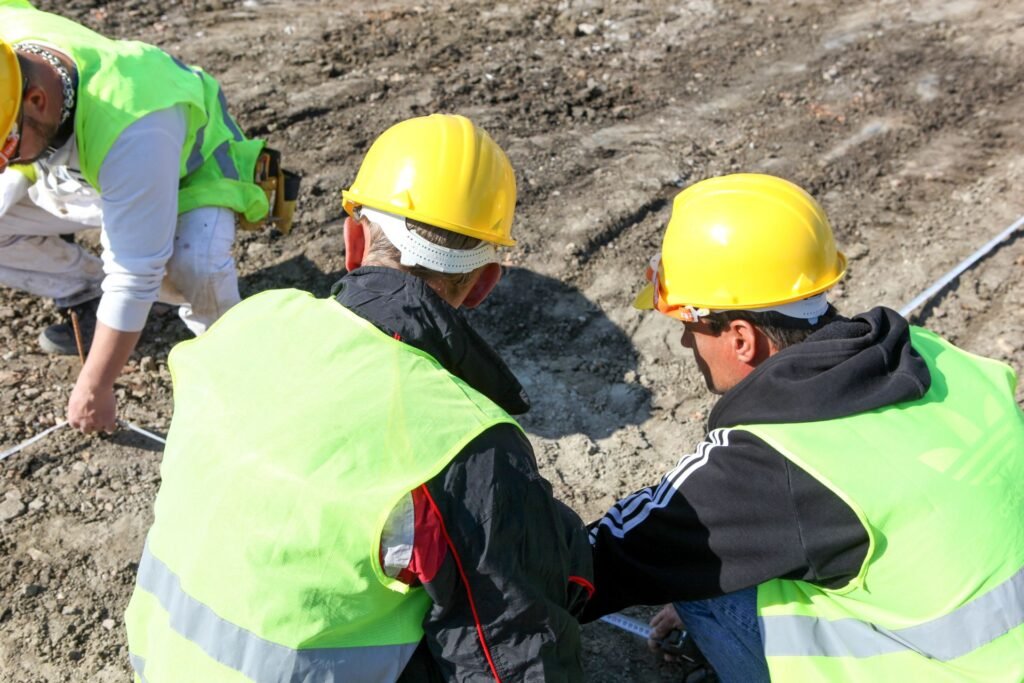
How To Plan For Civil Construction Costs: Tips For Stakeholders
Planning for civil construction costs is a critical step in ensuring the success of any project, whether it’s a large-scale infrastructure development or a smaller, community-based initiative. For stakeholders, managing these costs effectively requires a comprehensive approach that starts well before the first shovel hits the ground. Below, we delve into key strategies that can help stakeholders navigate the complexities of budgeting for civil construction projects.
1. Early Planning: The Foundation of Successful Budgeting
Early planning is the cornerstone of effective cost management in civil construction. At this stage, it’s crucial to develop a detailed and realistic budget that considers all aspects of the project. This includes not only the obvious costs such as materials and labor but also less apparent expenses like permits, environmental assessments, and potential delays.
Start by conducting a thorough feasibility study to understand the project’s scope and potential challenges. This initial step will provide a clear picture of the financial requirements and help in setting a realistic budget. A well-planned budget allows for better financial control throughout the project and minimizes the risk of cost overruns.
2. Engaging Experts: The Role of Professional Insight
Involving experienced professionals early in the planning process is invaluable. Project managers, architects, and engineers bring a wealth of knowledge and expertise that can help in crafting a cost-effective plan. Their input is particularly crucial in identifying potential cost-saving opportunities and ensuring that the project is designed to be both efficient and within budget.
Experts can also assist in selecting the right materials, optimizing the design to reduce unnecessary expenses, and ensuring that the project complies with all regulatory requirements. By engaging these professionals from the outset, stakeholders can avoid costly mistakes and ensure that the project is built on a solid financial foundation.
3. Contingency Planning: Preparing for the Unexpected
No matter how well you plan, unexpected challenges are inevitable in civil construction. That’s why setting aside contingency funds is a best practice that cannot be overlooked. A contingency fund is essentially a financial safety net, designed to cover unforeseen expenses that could arise during the construction process.
These unexpected costs could include anything from supply chain disruptions to unanticipated site conditions or design changes. By allocating a portion of the budget to contingency, stakeholders can ensure that the project stays on track even when unexpected issues arise. Typically, a contingency fund of 10-20% of the total budget is recommended, depending on the project’s complexity and risk factors.
4. Monitoring and Adjusting: Staying on Top of Costs
Once the project is underway, continuous monitoring of both progress and costs is essential. Regular check-ins allow stakeholders to compare actual expenses against the budget and to identify any discrepancies early. This proactive approach enables timely adjustments, whether that means reallocating resources, negotiating with suppliers, or revising the project scope.
Effective monitoring also involves keeping all stakeholders informed about the project’s financial status. Transparent communication ensures that everyone is aware of any budgetary concerns and can contribute to finding solutions. By staying vigilant and adaptable, stakeholders can maintain control over costs and avoid financial surprises that could derail the project.
Planning for civil construction costs requires a strategic and proactive approach. By focusing on early planning, engaging the right experts, preparing for the unexpected with contingency funds, and continuously monitoring and adjusting as needed, stakeholders can significantly increase the likelihood of completing the project on time and within budget. These steps are not just best practices—they are essential for the successful financial management of any civil construction project.
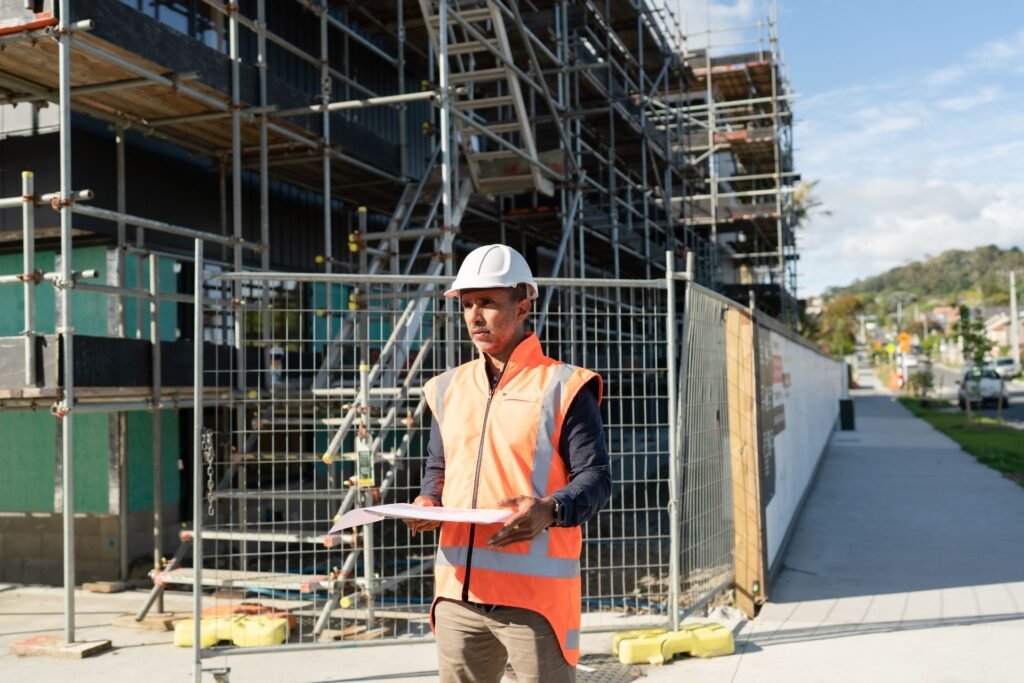
Future Trends: What To Expect In Civil Construction Costs In NZ
Technological Advancements
As the civil construction industry in New Zealand continues to evolve, technological advancements are poised to play a pivotal role in shaping future costs. Innovations such as 3D printing and AI-driven project management are not just buzzwords; they are transformative tools that could redefine the construction landscape.
3D printing, for instance, has the potential to revolutionize the way structures are built. By enabling the creation of complex architectural components with precision and speed, this technology could significantly reduce labor costs and material waste. In the long run, the widespread adoption of 3D printing in construction could lead to more efficient project timelines and lower overall expenses. However, the initial investment in technology and training might cause a temporary increase in costs before the benefits fully materialize.
AI in project management is another game-changer on the horizon. AI tools can enhance decision-making processes by analyzing vast amounts of data in real-time, predicting potential issues, and optimizing resource allocation. This level of precision can help avoid costly delays and budget overruns, ultimately contributing to more predictable and manageable construction costs. As these technologies become more integrated into the industry, we can expect a shift towards smarter, more cost-effective project execution.
Green Building Practices
Sustainability is no longer an optional consideration in the construction industry; it’s becoming a necessity. As demand for green building practices grows in New Zealand, we can anticipate significant impacts on civil construction costs. Sustainable construction methods often involve higher upfront costs due to the need for specialized materials and technologies. However, these initial investments can lead to long-term savings through reduced energy consumption, lower maintenance costs, and enhanced building performance.
Moreover, regulatory pressures and incentives for sustainable construction are likely to increase, driving more projects to adopt green practices. As the industry adapts, we may see a rise in the cost of materials like recycled steel or low-carbon concrete, as well as in the demand for skilled labor trained in sustainable construction techniques. While these factors could contribute to higher costs in the short term, the broader economic and environmental benefits are expected to outweigh these expenses, leading to a more sustainable and resilient construction industry in New Zealand.
Economic Factors
Global economic trends have always played a significant role in shaping construction costs, and the future will be no different. In the coming years, we can expect various economic factors to influence the price of materials and labor in New Zealand’s civil construction sector.
Fluctuations in global markets can affect the cost of imported materials, such as steel and timber, which are crucial for construction projects. For example, changes in trade policies, tariffs, or supply chain disruptions could lead to price volatility. Additionally, inflationary pressures and exchange rate fluctuations can further impact the cost of materials and labor, making it more challenging for project managers to maintain budgets.
Labor costs are another critical factor influenced by the broader economy. As the global economy evolves, shifts in immigration policies, wage growth, and labor market demand could affect the availability and cost of skilled labor in New Zealand. In particular, a shortage of skilled workers could drive up wages, contributing to higher overall project costs.
In conclusion, while technological advancements, green building practices, and economic factors are all set to influence future civil construction costs in New Zealand, they also present opportunities for innovation and growth. By staying ahead of these trends, industry professionals can better navigate the complexities of the future construction landscape, ensuring more efficient, sustainable, and cost-effective projects.

FAQs: About Cost Of Civil Construction Nz
What is the typical cost range for civil construction projects in New Zealand?
The cost of civil construction projects in New Zealand varies significantly depending on the project’s scale and complexity. Small projects, such as minor road improvements, can start at around NZD 2 million, while large infrastructure projects like motorways or bridges can exceed NZD 100 million.
What factors most influence the cost of civil construction in NZ?
Key factors influencing the cost include the size and scope of the project, location, material costs, labor costs, compliance with local regulations, and the project’s timeline. Each of these factors can significantly impact the overall budget.
How do material costs affect civil construction budgets?
Material costs are a significant part of the overall budget in civil construction. Fluctuations in the prices of materials like concrete, steel, and asphalt can substantially increase project costs. Additionally, the availability and transportation of these materials, especially in remote locations, can also impact the budget.
Why is location a crucial factor in determining civil construction costs?
Location affects costs due to logistical considerations, such as the accessibility of the site, transportation of materials, and local labor availability. Urban projects may face higher land and labor costs, while rural projects might incur additional expenses for transporting materials and equipment to the site.
How does labor availability impact civil construction costs in New Zealand?
Labor costs can vary depending on the availability of skilled workers. In regions where there is a shortage of qualified labor, wages can be higher, which increases overall project costs. Conversely, regions with a surplus of workers may experience lower labor costs.
What role do government regulations play in civil construction costs?
Government regulations, including building codes, environmental standards, and safety requirements, can significantly impact costs. Compliance with these regulations often requires additional resources, time, and specialized labor, which can drive up the total project cost.
How can the duration of a civil construction project affect its cost?
The longer a project takes to complete, the higher the costs can be. Extended timelines may result in increased labor costs, prolonged equipment rentals, and greater exposure to fluctuating material prices. Additionally, weather-related delays can add unforeseen expenses.
Are there ways to reduce the cost of civil construction projects in NZ?
Cost reduction strategies include thorough early planning, effective project management, using locally sourced materials, and adopting modern construction technologies. Engaging experienced professionals and regularly reviewing the budget throughout the project can also help control costs.
How do economic factors influence civil construction costs in New Zealand?
Global and local economic conditions can affect the cost of materials and labor. For instance, economic downturns may lower material costs due to reduced demand, while economic booms might increase costs due to higher demand for resources and labor.
What are some recent trends in civil construction costs in New Zealand?
Recent trends include rising material costs due to supply chain disruptions and increasing labor costs driven by skill shortages in the construction industry. Additionally, there is a growing emphasis on sustainable construction practices, which can sometimes lead to higher upfront costs but result in long-term savings.
Conclusion
In conclusion, understanding the intricacies of civil construction costs is crucial for anyone involved in planning or investing in such projects. We’ve explored the various factors that influence these expenses, from materials and labor to regulatory requirements and unforeseen contingencies. The complexity of these elements underscores the importance of thorough planning and informed decision-making. As you embark on your civil construction journey, it’s vital to consider all these aspects to ensure a successful outcome. For those seeking tailored advice or more in-depth guidance, consulting with industry professionals can provide valuable insights and help navigate the challenges of civil construction effectively.
About the Author:
Mike Veail is a recognized digital marketing expert with over 6 years of experience in helping tradespeople and small businesses thrive online. A former quantity surveyor, Mike combines deep industry knowledge with hands-on expertise in SEO and Google Ads. His marketing strategies are tailored to the specific needs of the trades sector, helping businesses increase visibility and generate more leads through proven, ethical methods.
Mike has successfully partnered with numerous companies, establishing a track record of delivering measurable results. His work has been featured across various platforms that showcase his expertise in lead generation and online marketing for the trades sector.
Learn more about Mike's experience and services at https://theleadguy.online or follow him on social media:

